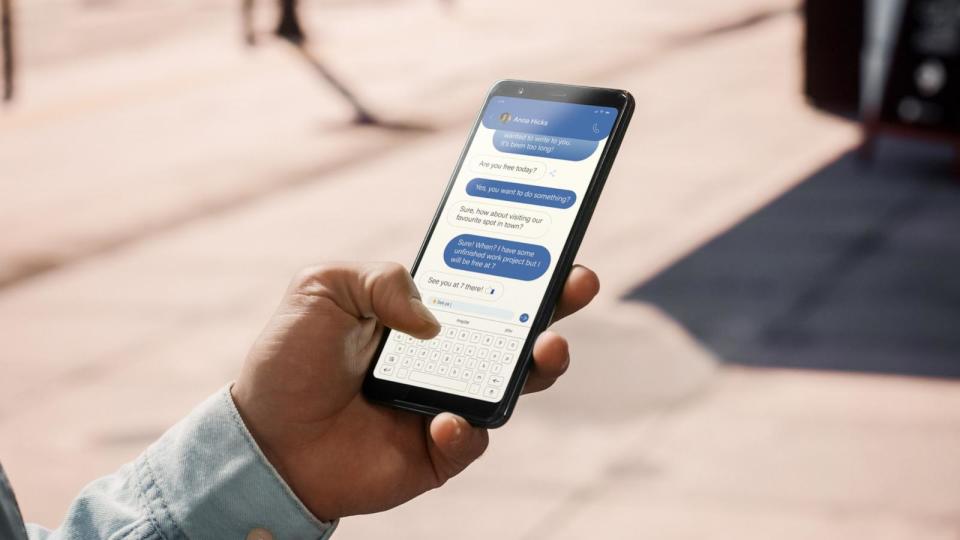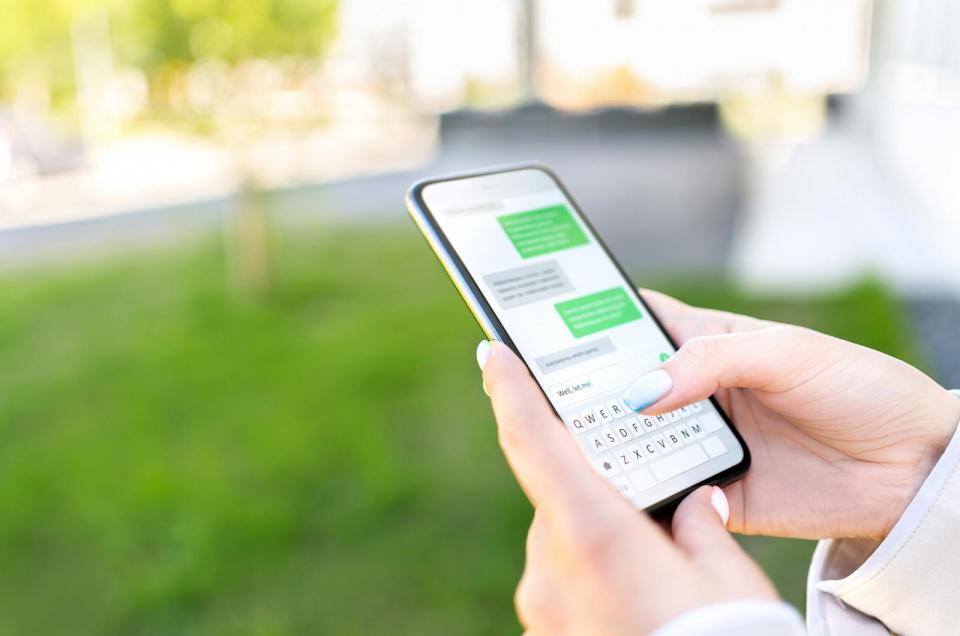If you send a text from one iPhone to another iPhone, most of the time the text will be blue. If you send a message from iPhone to Android phone, this text will be green.
On the surface, this might not seem like a big deal, but behind these colorful messages is a years-long battle between Apple and a group of app developers working on ways to bridge the blue/green divide.
The first text message was sent on December 3, 1992. It was sent by software developer Neil Papworth to Richard Jarvis of Vodaphone, a British telecom company. Jarvis was at his office holiday party at the time, so the message simply said “Merry Christmas.”
This holiday greeting was an SMS, also known as a text messaging service. SMS was a common technology that phone companies and software developers all agreed on: this was how texting was done.
“SMS has been basically the protocol by which text messages are sent for over a decade at this point,” says Chance Miller, Editor-in-Chief of 9to5Mac.

Nearly a decade later, the Multimedia Messaging Service known as MMS was introduced. Now texts can be longer and users can send images and videos via text.
Then, in 2011, the messaging paradigm changed again when Apple introduced its private messaging app, iMessage.
“Apple advertised iMessage as basically a modern version of SMS,” says Miller.
iMessage offered more than simple messaging. “Read receipts” indicated whether the recipient of a message had opened a text. Typing indicators showed that someone was sending a message to the user. iMessage users could send and receive higher quality images and videos. Later, iMessage will add another dimension to text communication by adding the ability to “react” to texts.
iMessage texts also got a fresh coat of paint: outgoing texts now appeared blue. Sending a message from your iPhone to an Android phone defaults back to older SMS technology; This means no read receipts, no typing indicators, and no high-quality image and video messages. Texts sent to Android users were green instead of blue text.
“There is a stigma associated with green bubbles,” Miller says.
Beyond the social implications of green or blue bubbles, there is also a privacy concern. Blue texts – iMessages – are encrypted. This is not the case with SMS messages.
“There is no built-in encryption in the SMS standard,” says Miller. “Your messages are vulnerable to your carrier seeing what you say [or] “Someone comes in and gives Apple or your carrier a search warrant, and they have to give that information.”
In recent years, an industry of developers has emerged, all working on ways to bring the “blue bubble” to Android communications. Earlier this year, Nothing Chats, an app made by Android smartphone maker Nothing, was claimed to bring iMessage to Android. But Miller says the company uses its own Mac computers to act as intermediaries between its users and the Apple devices they send messages to, raising security concerns.
“What you do is essentially give your Apple ID and password to this company, which then logs you into a Mac on a server farm somewhere,” Miller says. “So you have no idea what they’re doing with your Apple ID and password, and this is in no way a secure way to do that.”
Because of these privacy issues, Nothing voluntarily pulled the app from Google’s app store shortly after launch. In a statement on its website, Nothing apologized and said it was working to “correct a few errors.”


Earlier this month, another developer called Beeper launched an app called Beeper Mini.
“Android users can download this app and it will transform their message from a green balloon to a blue balloon,” says Beeper co-founder Eric Migicovsky.
Unlike Nothing Chats, Beeper Mini does not use a server farm of Apple computers. Migicovsky says they reverse-engineered iMessage instead.
“We studied how iPhones connect to iMessage and applied the same technique to Android,” Migicovsky tells ABC Audio.
“They found a way to spoof it and make you look like a real Apple device even though you’re an Android logging in through Beeper,” Miller says.
Migicovsky says 100,000 people downloaded Beeper Mini in the days following its Dec. 5 launch. Downloaders gained access to the world of iMessage with most of its features, including encryption.
“We were getting messages from all over the world about people finally being able to join a group chat with their families,” says Migicovsky. “We were hearing about people who were more successful at dating because they had a blue balloon versus a green balloon.”
However, these blue balloon communications were short-lived.
On December 8, Beeper Mini users began reporting that their messages were not delivered, and communication was limited to the old SMS standard. Amid the confusion, Apple weighed in, saying it was “taking steps to protect our users.”
“Three days after we launched, Apple tried to block Beeper Mini,” says Migicovsky.
Apple’s statement did not name Beeper, but said it “blocks techniques that use fraudulent credentials to access iMessage” and that these techniques pose “significant risks to user security and privacy.” leaving users open to “unwanted messages, spam and phishing attacks.”
Migicovsky says this is not true.
“Beeper Mini definitely and demonstrably made communication between iPhone users and Android users safer. They turned it from a green balloon into a blue balloon,” he says. “The actions taken by Apple had the opposite effect. iPhones and Android They made communication between ‘s unencrypted, meaning less secure.”
Miller says Apple is right to be concerned about privacy if the Beeper Mini exploits a flaw in iMessage.
“Apple’s explanation is valid in some ways,” Miller says. “Even if Beeper was doing this for good, someone else could come along and reverse engineer the protocol and exploit it for spam, phishing attacks, unsolicited messages, and so on.”
Migicovsky says Beeper Mini is safe.
“We have proven time and time again that we are good stewards of your trust and that we only create a safe and useful app,” he says.


Beeper Mini is now back up and running with some changes. Android users can still send blue text messages to iPhones, but they need an Apple ID to do so. Previous iterations only required a phone number to access iMessage.
“We’re still working on a full fix; good luck,” says Migicovsky.
As pressure mounts on Apple to make iMessage more accessible, SMS messaging has been replaced by a new standard: Rich Communications Service, or RCS.
“In many ways, RCS does what iMessage does with read receipts, typing indicators, high-quality images and videos, but it is a standardized platform,” Miller says.
Most major Android developers have adopted the RCS standard; This means Android to Android messaging now comes with many iMessage-style features like read receipts and encryption. Last month, Apple announced it would support RCS starting in 2024; This means text calls from iPhone to Android could reach these features in the new year. But Miller says RCS may be ready to solve some technical issues with messaging, but one thing will remain the same.
“Apple said RCS messages would still remain green bubbles,” says Miller.
Learn more about Perspective from ABC Audio:
iMessage on Android? Inside the fight over green and blue text appeared first on abcnews.go.com